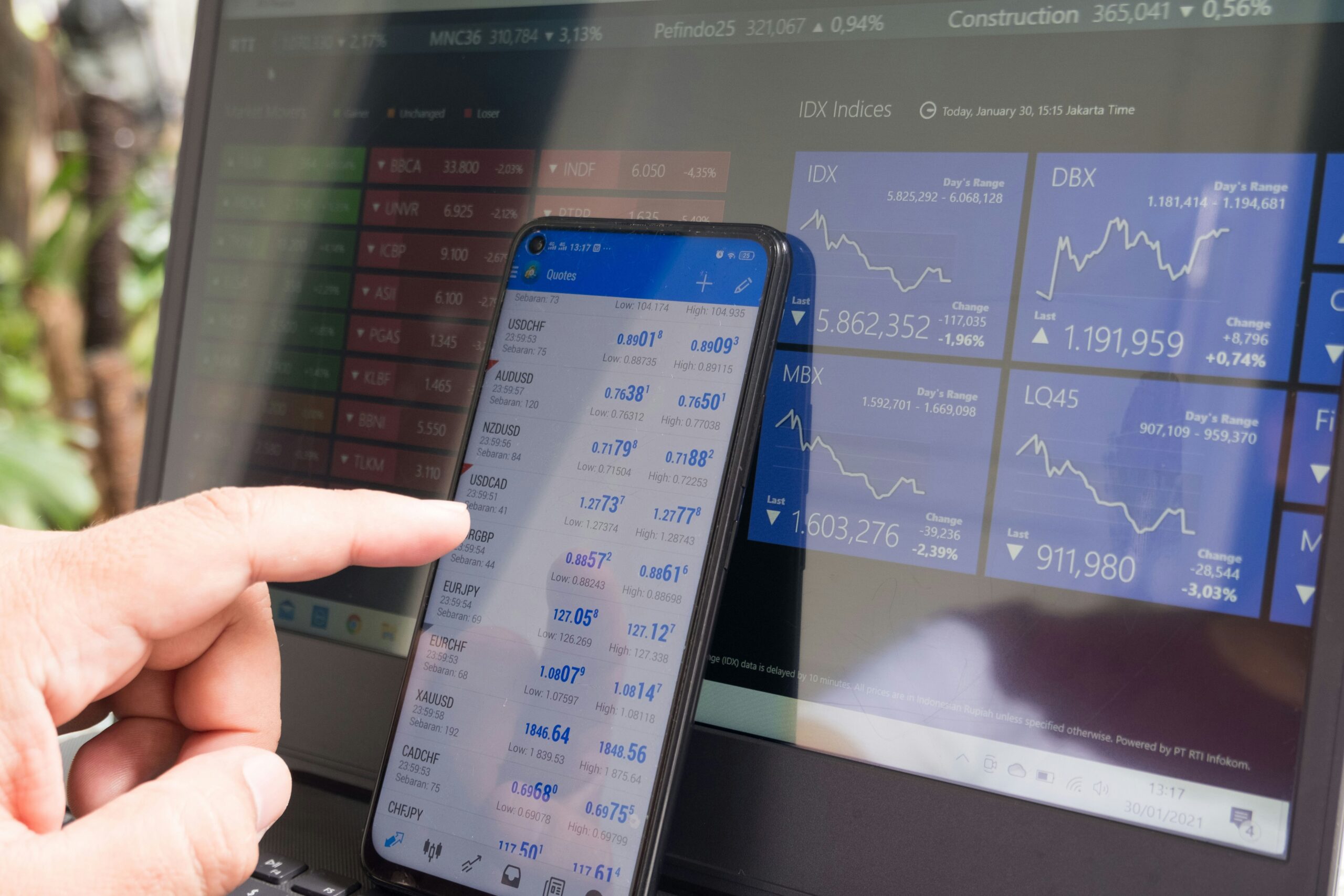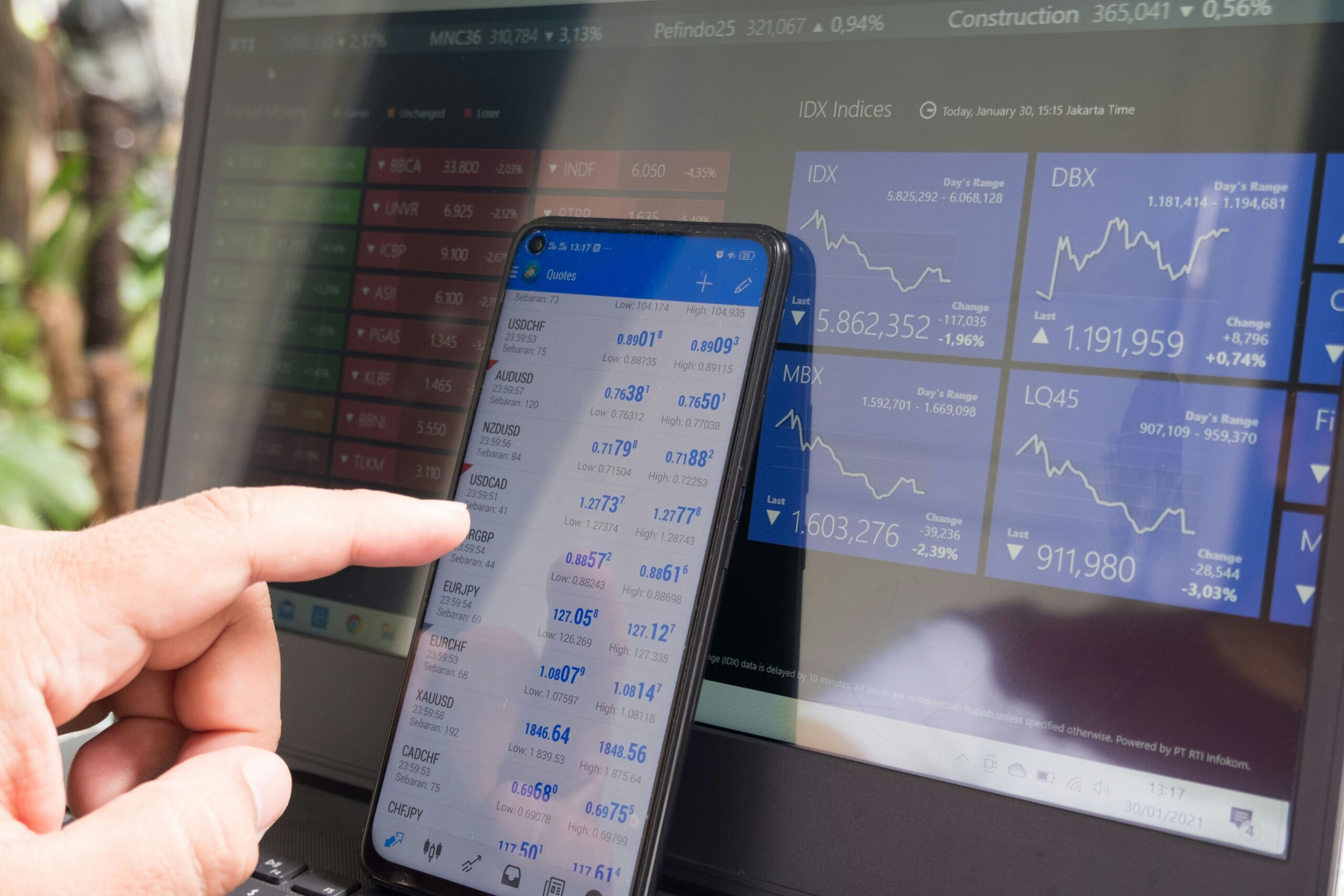
Introduction to Forex Trading
Forex trading, also known as foreign exchange trading, involves the buying and selling of currencies on the global market. It is one of the largest and most liquid financial markets in the world, with a daily trading volume exceeding $6 trillion. The significance of the Forex market lies in its pivotal role in international trade and finance. By facilitating currency conversion, it enables businesses, governments, and individuals to conduct transactions across borders, making global commerce possible.
The Forex market operates 24 hours a day, five days a week, thanks to its decentralized nature and the different time zones of major financial hubs around the world, including London, New York, Tokyo, and Sydney. This continuous trading environment ensures that there are always participants ready to trade, making the market highly liquid and dynamic.
Key participants in the Forex market include a range of entities, each playing a crucial role in its functioning. Central banks are among the most influential players, utilizing Forex reserves to stabilize their national currencies and implement monetary policies. Commercial banks and financial institutions are also significant participants, executing large-scale transactions on behalf of their clients and themselves. Corporations engage in Forex trading to hedge against currency risks associated with international trade and investments.
Individual traders, often referred to as retail traders, have gained increasing prominence in recent years, thanks to the rise of online trading platforms. These platforms provide access to the Forex market for anyone with an internet connection, enabling individual traders to speculate on currency movements and potentially profit from price fluctuations.
Understanding the fundamentals of Forex trading is essential for anyone looking to participate in this vast and complex market. By grasping the basic concepts, market structure, and key players, traders can better navigate the Forex landscape and make informed trading decisions.
The Mechanics of Forex Trading
Forex trading, or foreign exchange trading, operates on the principle of buying and selling currency pairs. A currency pair consists of a base currency and a quote currency, such as EUR/USD or GBP/JPY. The value of a currency pair is determined by comparing the value of one currency against the other. For instance, if the EUR/USD pair is quoted at 1.2000, it means 1 Euro is equivalent to 1.2000 US Dollars.
Understanding key terms in Forex trading is essential for navigating the market. A ‘pip’, short for percentage in point, is the smallest price movement in a currency pair. For most pairs, a pip is equivalent to 0.0001, but for pairs involving the Japanese Yen, it is 0.01. The ‘spread’ is the difference between the bid (buy) and ask (sell) price of a currency pair, and it represents the cost of trading. ‘Lot size’ denotes the volume of currency being traded, with a standard lot being 100,000 units of the base currency. ‘Leverage’ enables traders to control a larger position with a smaller amount of capital, amplifying both potential gains and losses.
Executing a Forex trade involves several steps. First, traders analyze the market and decide whether to buy or sell a currency pair. For instance, if a trader believes the Euro will appreciate against the Dollar, they might buy EUR/USD. Conversely, if they expect the Euro to weaken, they would sell EUR/USD. The trade is then executed through a broker, who facilitates the transaction and provides the necessary trading platform.
Common currency pairs include major pairs like EUR/USD, USD/JPY, GBP/USD, and USD/CHF, among others. These pairs are characterized by high liquidity and tight spreads. Brokers play a vital role in Forex trading, offering platforms for trade execution, providing leverage, and often supplying market analysis and educational resources. By understanding the mechanics of Forex trading, traders can make informed decisions and effectively navigate the Forex market.
Fundamental Analysis in Forex
Fundamental analysis in Forex trading involves evaluating the economic, social, and political forces that influence currency values. Unlike technical analysis, which focuses on price patterns and trends, fundamental analysis examines macroeconomic indicators to make forecasts about currency movements. This approach is crucial for traders aiming to understand the underlying factors that drive currency fluctuations.
Key economic indicators play a pivotal role in fundamental analysis. Gross Domestic Product (GDP) is a primary measure, reflecting the economic performance of a country. A growing GDP often leads to a stronger currency, as it indicates a robust economy. Employment rates are another critical indicator; higher employment generally signals economic strength, which can bolster a currency’s value. Inflation rates are equally important; while moderate inflation is typical of a healthy economy, hyperinflation or deflation can undermine currency stability. Interest rates, set by central banks, directly affect currency value. Higher interest rates tend to attract foreign capital, increasing demand for a currency and boosting its value.
Traders utilize news releases and economic reports to inform their trading decisions. For instance, a report indicating a higher-than-expected GDP growth can lead traders to buy the corresponding currency, anticipating its appreciation. Conversely, disappointing employment data might prompt traders to sell a currency, expecting its decline. By staying informed about scheduled news releases, traders can make strategic decisions in advance, positioning themselves to capitalize on anticipated market movements.
Examples of fundamental analysis in action include the reaction to central bank announcements. If the Federal Reserve signals a potential interest rate hike, the US dollar typically strengthens as traders anticipate higher returns on dollar-denominated assets. Similarly, political stability or instability can influence currency values; a country experiencing political turmoil may see its currency depreciate due to perceived economic risks.
Incorporating fundamental analysis into Forex trading provides a comprehensive view of the market, enabling traders to make informed decisions based on a wide array of economic indicators and news events. This approach, when combined with technical analysis, can enhance a trader’s ability to predict and respond to currency movements effectively.
Technical Analysis in Forex
Technical analysis is a fundamental approach to Forex trading that involves evaluating historical price data to forecast future market movements. This method is crucial for traders as it helps them make informed decisions based on market trends and patterns. The primary tools and techniques used in technical analysis include charts, trend lines, support and resistance levels, and various technical indicators.
Charts are the backbone of technical analysis, providing a visual representation of price movements over time. Traders use different types of charts, such as line charts, bar charts, and candlestick charts, to identify patterns and trends. Trend lines are drawn on charts to highlight the direction of the market, whether it is ascending, descending, or moving sideways. These lines help traders recognize potential entry and exit points.
Support and resistance levels are essential concepts in technical analysis. Support levels indicate a price point where a currency pair tends to find buying interest, preventing the price from falling further. Conversely, resistance levels are where selling interest is strong, preventing the price from rising. Identifying these levels allows traders to anticipate price movements and plan their trades accordingly.
Technical indicators are mathematical calculations based on historical price data that help traders predict future price movements. Some of the most commonly used indicators include moving averages, the Relative Strength Index (RSI), and the Moving Average Convergence Divergence (MACD). Moving averages smooth out price data to identify the direction of the trend. The RSI measures the speed and change of price movements, indicating overbought or oversold conditions. The MACD is a trend-following momentum indicator that shows the relationship between two moving averages, helping traders identify potential buy or sell signals.
By analyzing historical price data and applying these tools and techniques, traders can identify trading opportunities and develop strategies to capitalize on market movements. Technical analysis provides a structured approach to understanding market behavior, enabling traders to make well-informed decisions in the dynamic Forex market.
Risk Management in Forex Trading
Effective risk management is a cornerstone of successful Forex trading. The volatile nature of the Forex market necessitates a robust approach to managing potential losses and safeguarding investment capital. One of the primary strategies for risk management is setting stop-loss and take-profit orders. Stop-loss orders automatically close a trade when it reaches a predetermined level of loss, preventing further financial damage. Conversely, take-profit orders lock in gains by closing a trade once it hits a target profit level, ensuring that traders can secure their earnings without succumbing to market reversals.
Proper position sizing is another critical element of risk management in Forex trading. Traders should allocate a portion of their capital to each trade based on their risk tolerance and the specific characteristics of the trade. This helps mitigate the impact of any single loss on the overall trading portfolio. A common rule of thumb is to risk no more than 1-2% of one’s trading capital on a single trade, ensuring that even a series of losses won’t deplete the account significantly.
Diversification is equally important in managing risk. By spreading investments across different currency pairs and market conditions, traders can reduce the likelihood of experiencing significant losses due to adverse movements in a single currency pair. Diversification helps smooth out the volatility and provides a buffer against market unpredictability.
The psychological aspect of risk management cannot be overstated. Maintaining discipline and emotional control is vital for making rational decisions and avoiding impulsive trades. The fear of missing out (FOMO) or the urge to recoup losses quickly can lead to hasty decisions that exacerbate losses. Traders should adhere to their trading plan, regularly reviewing and adjusting their strategies based on performance and market conditions.
In conclusion, risk management is essential for long-term success in Forex trading. By implementing strategies like setting stop-loss and take-profit orders, proper position sizing, and diversifying portfolios, traders can protect their capital and navigate the complexities of the Forex market with greater confidence. Maintaining psychological discipline further ensures that traders remain focused and make informed decisions, ultimately enhancing their trading outcomes.
Developing a Forex Trading Plan
Creating a comprehensive Forex trading plan is an essential step for any trader aiming to succeed in the foreign exchange market. A well-structured plan acts as a roadmap, guiding traders through the complexities of the market and helping them make informed decisions. The first component of a trading plan is setting clear and realistic trading goals. These goals should be specific, measurable, achievable, relevant, and time-bound (SMART). For instance, a trader might aim to achieve a certain percentage return over a specified period or to limit losses to a predefined amount.
Next, defining one’s risk tolerance is crucial. Risk tolerance varies among traders and is influenced by factors such as financial stability, investment horizon, and psychological comfort with market fluctuations. Understanding personal risk tolerance helps in determining how much capital to allocate to each trade and setting appropriate stop-loss levels to protect against significant losses.
Selecting trading strategies is another vital component of a Forex trading plan. There are numerous strategies available, ranging from technical analysis to fundamental analysis, and from day trading to long-term investing. Traders should choose strategies that align with their trading goals and risk tolerance, and that they feel comfortable executing. It’s also beneficial to test these strategies using a demo account or backtesting historical data to ensure their effectiveness.
Establishing criteria for trade entry and exit is fundamental to disciplined trading. Entry criteria might include specific technical indicators, chart patterns, or economic events. Exit criteria should clearly define when to close a trade, whether to lock in profits or cut losses. These criteria help traders avoid emotional decision-making and maintain consistency in their trading approach.
Finally, regularly reviewing and adjusting the trading plan based on performance and market conditions is essential for long-term success. The Forex market is dynamic, and what works today might not be effective tomorrow. By continuously evaluating and refining their trading plan, traders can adapt to changing market conditions and improve their overall performance.
Choosing a Forex Broker
Selecting a reliable Forex broker is a critical step in your trading journey. The first factor to consider is the broker’s regulatory status. Ensure that the broker is registered with a reputable financial authority such as the Financial Conduct Authority (FCA) in the UK, the Commodity Futures Trading Commission (CFTC) in the US, or the Australian Securities and Investments Commission (ASIC). Regulatory oversight provides a level of assurance that the broker adheres to industry standards and operates transparently.
Next, evaluate the features of the trading platform offered by the broker. A user-friendly interface, real-time data, and robust charting tools are essential for effective trading. The platform should also support various order types and provide quick execution speeds. Many brokers offer demo accounts, which can be a valuable way to test the platform’s functionality before committing real funds.
Customer support is another crucial aspect. Opt for brokers that offer comprehensive support services, including live chat, phone, and email support. The availability of support in your preferred language and during your trading hours can significantly enhance your trading experience.
Fees and commissions vary widely among brokers and can impact your profitability. Look for brokers with transparent fee structures, including spreads, commissions, and any additional costs such as withdrawal fees. Some brokers may offer commission-free trading with wider spreads, while others may charge commission but offer tighter spreads. Consider your trading style and frequency to determine which fee structure is most cost-effective for you.
Additionally, assess the tools and resources available. Educational materials, market analysis, and trading signals can provide valuable insights and enhance your trading strategy. Many brokers offer these resources as part of their service, which can be particularly beneficial for novice traders.
When comparing brokers, reading reviews and seeking recommendations from other traders can provide valuable insights. Look for feedback on the broker’s reliability, platform performance, and customer service. By considering these factors and conducting thorough research, you can make an informed decision and choose a Forex broker that aligns with your trading needs and goals.
Common Mistakes and How to Avoid Them
Forex trading, while potentially lucrative, is fraught with pitfalls that can derail even the most well-intentioned novice traders. Identifying these common mistakes and knowing how to avoid them is crucial for long-term success in the Forex market.
One of the most prevalent errors is overtrading. Many beginners fall into the trap of trading too frequently, often driven by the desire to recoup losses quickly or capitalize on every market move. This approach can lead to significant financial losses and emotional burnout. To avoid overtrading, it is essential to develop a disciplined trading strategy and stick to it. Limit the number of trades you execute and focus on quality over quantity.
Another critical mistake is the lack of a trading plan. A well-crafted trading plan serves as a roadmap, guiding your trading decisions and helping you stay focused on your long-term goals. It should include your risk tolerance, entry and exit points, and specific strategies for different market conditions. Without a trading plan, traders are more likely to make impulsive decisions based on short-term market fluctuations, which can be detrimental to their overall success.
Poor risk management is another common issue. Effective risk management involves setting stop-loss orders, diversifying your portfolio, and never risking more than a small percentage of your capital on a single trade. By managing risk effectively, you can protect your investment and ensure that a few bad trades do not wipe out your entire account.
Emotional trading is a significant hurdle for many traders. Fear and greed can cloud judgment and lead to irrational decisions. To combat emotional trading, it is essential to remain objective and stick to your trading plan. Keeping a trading journal can be a valuable tool, allowing you to track your trades, reflect on your decisions, and identify patterns in your behavior.
Finally, staying informed about market developments and continuously educating oneself is vital. The Forex market is dynamic, and staying up-to-date with economic news, market trends, and new trading strategies can give you a competitive edge. Engaging with reputable Forex trading communities, attending webinars, and reading industry publications can help you stay informed and improve your trading skills.





